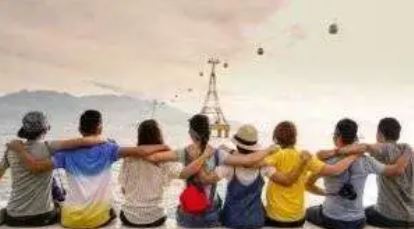Dark tourism has been a trend in recent years. Previously, this term was limited to research articles and journals, but nowadays, every individual is aware of this term. So, exotic places around the world?
What is dark tourism?
Dark tourism definition:
Dark tourism refers to travelling to places which are linked with death, disaster or in most cases thanatologic. It can be regarded as an act with certain measure of controversy, as some consider it a form of honoring and remembrance while others think of as unethical.

What are some dark tourism sites?
Dark tourism sites include the concentration camp in Auschwitz, the Chornobyl nuclear disaster site, 9/11 Site in New York. Some of the best places for girl trips may well involve areas such as cemeteries, zombie performances or motion picture-simulated historical graves.
Over the past few years, the trend of visiting dark tourism destinations has become popular among the people. Other names that have been given to this form of tourism include mourning tourism, grief tourism or thanatourism, all of which literally means visiting tragic related sites. However, for some, it may seem quite eerie, but for others, dark tourism can indeed be quite an entertaining experience for all those who are interested in somewhat unconventional types of vacations!
Such locations elicit a similar feeling to the visitors when they come to know something or some aspect that stirred history. To others, it is an outlet to cope up of which provides them a chance to pay tribute to the dead and, in turn, to feel history in a more intimate way.
Why is dark tourism so popular?
Several reasons have been cited for why dark tourism has become famous, so why are dark tourists so active?
The dark tourism industry also has a positive effect on the local economies because these visits bring money, concerning tourism revenues, and also create tours and offerings. Jury participants are the people who live in the area and are depicted as working as tour guides while narrating their experiences and their version of the events. This way the travellers are able to have an insight into the sad past incidences as they enjoy their tour.

It is a type of travel that mentally demands much of the traveller and places them in an environment that is wholly new to them. The proposal that individuals go to these dark places, only to encounter a portrayal of a post-trauma site, may appear rather strange, paradoxical even; but to navigate through a space as if the place one is in has been affected by a disaster is not meant to be entertaining. The uncomfortable emotions that are felt can be for reflecting, learning and personal and/or professional growth or change.
The spectrums of dark tourism comprise the negative aspects of life. As we discussed earlier, dark tourism is all about death and suffering but it doesn’t aim at helping its visitors celebrate death, but to remember the victims, understand life’s challenges, and appreciate life. Moreover, it helps people understand how to make this world a better place. Thus, visiting such mysterious and ancient places as historical sites and cemeteries can turn an ill-advised act of dark tourism into a worthy experience if viewed with reverence and attentiveness.
So, a trip to any destination involving darkness following the premise of curiosity ensures that the visitors are surprised and, in fact, positively. Such travelling is unique and opposite to the routine type of travelling that is commonplace.





Comments